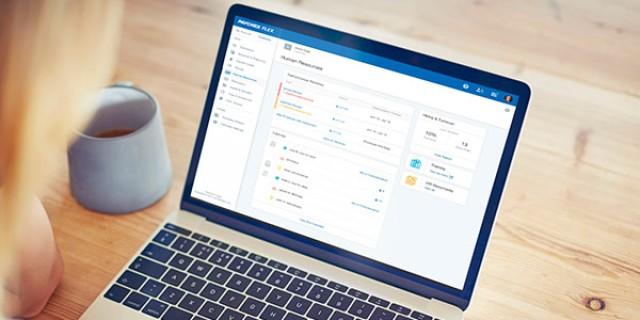Filing business taxes is an annual responsibility that can't be ignored. As we enter 2026, year-end tax planning for businesses is more valuable than ever. This year brings higher standard deductions, revised income tax brackets, new IRS compliance priorities, and changes to the SALT deduction cap.
The key to small business tax savings when filing your business tax return is to understand which deductions, credits, and timing decisions make the biggest difference for your particular business structure and financial goals. Here, we’ve outlined 15 business tax strategies to help small business owners reduce taxable income, optimize employee benefits, and take advantage of new tax opportunities in 2026.
What's New for 2026 Tax Planning
While you may be focused on preparing your 2025 return, many people will want to understand tax changes that have occurred as a result of legislation and how this could impact their 2026 returns that are filed in 2027. A few notable items include the following:
- Inflation adjustments mean higher standard deductions across the board, helping small business owners keep a little more of what they earn.
- SALT deduction cap jumps from $10,000 to $40,000 and continues to rise 1% each year through 2029.
- The Qualified Business Income (QBI) deduction, which was originally set to expire after 2025, is now permanent. The rule allows eligible pass-through business owners to deduct 20% of their qualified business income, and for 2026, a new $400 minimum deduction applies to taxpayers with at least $1,000 of QBI.
- Expanded deductions under Section 179 are taking effect. For tax year 2026, companies can immediately expense up to $2.56 million of qualifying purchases, up from $1.25 million in 2025. Although, the deduction phases out once total spending exceeds $4.09 million.
- Energy-efficiency deductions are winding down. The commercial clean vehicle credit was disallowed as of September 2025, while the energy efficient commercial buildings deduction ends for projects starting after June 30, 2026.
15 Tax Saving Tips for Your Business
Don't wait until it's time to file your business tax return to act. You can trim your tax liability in 2026 by taking early action and implementing several strategies now. Remember, it's always a good idea to consult your company tax expert for more information.
1. Maximize Deductions and Credits
Most, but not all, of your business outlays can generate tax deductions or credits that effectively offset the tax on your profits. “Meet with your CPA to go through your financial and personal statements to identify every deduction and tax credit available to you,” says Gene Marks, CPA, small business owner, and author.
Accrued expenses can be used to maximize deductions by recognizing expenses when they are incurred, even if they are not yet paid. Check what's available to you and determine whether you qualify for these write-offs early, rather than scrambling during filing season.
Also, don’t overlook how technology can help. AI-powered tools can analyze your financial data to spot potential deductions or missed credits. If you’re comfortable doing so, you can provide information — not sensitive documents — to systems like ChatGPT. There’s always some risk in sharing data online, but the potential upside of uncovering tax saving strategies for business owners is worth it for some.
2. Adopt or Contribute to a Qualified Retirement Plan
You can gain a current tax deduction for qualified retirement contributions while building up tax-deferred income for retirement. Contribution limits increase in 2026, with business owners allowed to put away up to $24,500 in a 401(k) or $17,000 into a SIMPLE IRA. The SECURE Act 2.0 raises catch-up contribution limits for workers aged 60 to 63 and requires higher earners to make catch-up contributions on a Roth (after-tax) basis.
If you establish a new plan, you could be eligible for tax credits to offset startup costs and additional credits for providing employee matches. Many states are also rolling out mandatory retirement plan access for small employers, making early adoption a smart move to stay compliant and competitive.
With higher contribution limits, expanded credits, and new state and federal requirements, 2026 is an ideal time to start or review your plan. Choosing the right retirement plan depends on your business size, who contributes, and how much flexibility you need.
| | 401(k) | SEP IRA | SIMPLE IRA |
|---|
| Best for | Mid- to large-size businesses (50+ employees) | Self-employed and small businesses | Small businesses (≤100 employees) |
|---|
| Who Can Contribute | Employer and employees | Employer only | Employer and employees |
|---|
| 2026 Contribution Limits | Employee: up to $24,500 (+12,000 catch-up age 50+) Employer: up to 25% of pay (with max adjusted annually for inflation) | Employer: up to 25% of pay (with max adjusted annually for inflation) | Employer: 2% nonelective or 3% match |
|---|
| Administrative Burden | Most complex – annual filings and testing required | Easiest to set up and maintain | Simple setup; no annual filings required |
|---|
3. Use an Accountable Plan for Reimbursing Employee Business Expenses
Reimbursing employees through an accountable plan allows businesses to deduct the expenses to the extent otherwise allowed, but employees are not taxed on the reimbursements. These reimbursements are not subject to employment taxes. Under IRS Publication 463, expenses must have a clear business purpose. Common mistakes, such as providing lump-sum allowances or failing to require receipts, can cause payments to be treated as taxable income.
Covered costs can include travel, mileage, internet service, phone use, or home office expenses for remote or hybrid workers. Establishing a clear accountable plan not only protects deductions but also strengthens employee trust and retention — 87% of remote employees say flexibility is a top priority, according to Paychex research. “Consider an expense management platform to help capture employee business expenses and travel so that they can get reimbursed, and the employer can get a deduction,” says Marks.
4. Review Your Business Structure
How you set up your business under state law, such as a limited liability company or a corporation, affects the tax treatment of income and expenses for the business and owners. For instance, a sole proprietorship might incorporate to give the owner personal liability protection and the opportunity to have income tax withholding from a salary, which can relieve the owner of making estimated tax payments.
For profitable small businesses, an S-corporation election can offer meaningful tax savings by allowing owners to take part of their income as distributions instead of wages, which can reduce self-employment taxes. Additionally, the 2025 tax law made QBI, also known as the Section 199-A deduction, permanent, so you can take a 20% deduction at the individual level as you’re filing your individual return. This should encourage you to have a conversation with your accountant to see whether establishing a pass-through entity or C corporation is right for you.
Timing is important, as any restructuring must be completed before December 31 to apply for that tax year. You may consider partnering with a Professional Employer Organization (PEO) to simplify compliance and payroll administration while retaining the benefits of your chosen entity type.
5. Consider Health Insurance and Dependent Care Options for Employees
Health and dependent care benefits remain a powerful way to reduce taxable income while supporting employees’ well-being. Premiums paid for group health insurance are fully deductible, and contributions to health savings accounts (HSAs), health reimbursement arrangements (HRAs), or flexible spending accounts (FSAs) can lower both FICA and income taxes.
Contribution limits in 2026 rise to $4,400 for individual HSAs and $8,750 for family coverage, while the health FSA limit increases to $3,400 and the dependent care FSA is $7,500 per household. Small businesses offering qualified coverage may also be eligible for the Small Business Health Care Tax Credit, which helps offset the cost of premiums.
The more you contribute to employees’ health care, the bigger the deduction you get, and some employers are finding creative ways to use benefits as an alternative to pay raises. Allocating part of compensation increases toward health care contributions can improve take-home pay while saving on payroll taxes. In addition, certain states now provide tax credits for paid family and medical leave (PFML) when employers continue to compensate staff during leave periods.
6. Maximize Capital Expenditures
Just because the year is coming to a close does not mean opportunities for end of year tax tips are over. The cost of business driving can be deducted using the actual costs involved or relying on an IRS-set rate. For reference, the standard mileage rate in 2025 was 70 cents per mile.
A business that makes larger purchases can choose between Section 179 expensing and bonus depreciation to write off the cost. Under Section 179, you can deduct up to $2.56 million of qualifying property placed in service by December 31, with the deduction phasing out once total spending exceeds $4.09 million. Bonus depreciation continues to apply for qualifying new or used assets but at gradually reduced rates.
The de minimis safe-harbor election is another way to simplify record-keeping by allowing businesses to immediately expense smaller purchases rather than tracking them as assets. For manufacturers or businesses expanding facilities, having projects ready by December 31 can secure the full deduction for 2026.
All of these elections are made when your tax return is filed, so reviewing purchases with your CPA as part of your year-end tax planning for small business owners helps ensure assets are placed in service in time to qualify.
7. Make Sure You Pay All Your Estimated Payments
Falling behind on estimated taxes can create painful consequences at filing time. The IRS requires most owners to make quarterly estimated tax payments when a tax bill of $1,000 or more is expected. If you miss or underpay the installments, it can trigger penalties and interest even if you pay the full balance at a later date.
If you don't already use the services of an experienced tax preparer (one who keeps abreast of complex and fluid tax laws), it's a good idea to find one. Businesses with limited tax help are 50% more likely to face IRS penalties, according to a Thomson Reuters Institute 2025 report.
Businesses have a few options when it comes to professional help:
- A CPA is a good choice for complex business situations, such as having multistate operations or planning across multiple entities.
- Enrolled agents (EAs) are geared more toward IRS representation and small business tax compliance.
- Tax software might be your best option if you have very simple single-entity returns.
Whichever path you choose, know that the cost of tax professional fees may be modest compared to the tax savings you may reap and the tax traps you may avoid.
8. Maximize Your R & D Expenditures
“Under the new tax law, you can deduct 100% of expenses incurred rather than amortize them,” says Marks. To take full advantage, you’ll need accurate record-keeping, as no deduction can be claimed for travel expenses or charitable contributions without the required substantiation.
The IRS generally recommends businesses keep tax documentation for three to seven years. Digital record-keeping can help you keep track of it all. The best approach is to capture expenses as they happen, tag them to the right project, and reconcile regularly so your books stay accurate year-round. Cloud-based accounting tools that integrate with systems like QuickBooks, Xero, or Sage through Paychex can make this process easier and store receipts automatically.
9. Write-Off Unused Inventory and Accounts Receivable
Year-end is the perfect time to take a close look at what’s sitting on your shelves – or on your books. “Take a walk around your premises and note any inventory that hasn’t moved in two or three years — it’s probably time to scrap it and write it off as loss,” says Marks. The same logic applies to accounts receivable. Review your aging report and flag invoices that are more than 150 days past due and write it off.
10. Use Tax-Free Loan Options From Your Business
Business owners can access tax-free loans from their companies to boost revenue and liquidity without incurring taxes, as long as they follow IRS guidelines. Properly structuring the loan with clear terms — like an interest rate and repayment schedule — can remain a nontaxable event, offering flexibility to cover personal or business expenses.
To avoid reclassifying the loan as taxable income, keep documentation detailing the loan terms and stick to a realistic repayment schedule. This approach provides financial flexibility without additional tax liability. Consulting a tax adviser can help ensure the loan meets IRS standards and stays tax-free.
11. Defer Income To Lower Next Year's Tax Bill
Deferring income to the 2027 tax year is a strategic way for businesses to manage taxable income, particularly if you expect to be in a lower tax bracket. Unearned or deferred revenue is recorded as a liability on the 2026 balance sheet and recognized as income only when the corresponding services or products are provided.
By delaying invoicing or postponing receipt of income until after the new year, you can effectively reduce 2026’s taxable income, potentially lowering your current tax bill. This approach is beneficial for businesses experiencing fluctuating income or anticipating changes in tax rates.
Note that for accrual-based businesses, income is recognized when it’s earned, not when it’s received, so deferral opportunities are more limited. Also, businesses should keep in mind the IRS’s constructive receipt rule: you can’t simply refuse payment or hold a check that’s already available to you.
To make the most of income deferral, it's important to plan carefully and ensure that deferring doesn't disrupt cash flow or business operations. Working with a tax adviser and considering the TCJA provisions potentially expiring after 2025 can help you assess whether deferring income aligns with your financial goals and forecasted tax obligations. This strategy can provide immediate tax relief while using deferred revenue and giving your business greater flexibility in managing its income across tax years.
12. Consider Reimbursing Employees for Education
One of the most overlooked tax strategies small businesses can take advantage of is education benefits. Setting up an education assistance plan is relatively simple and can cover eligible expenses like:
- Books and training materials
- Equipment and supplies
- Tuition and other fees
The IRS rules allow employers to reimburse employees up to $5,250 per year for education costs, even if the training doesn't directly relate to their current job. This payment is tax-free to the employee and fully deductible for the business.
13. Consider Reimbursing for Adoption
Another powerful but often underutilized benefit is adoption assistance. It can offer tax advantages for you and your employees. Under current tax law, employers can provide up to $16,800 per employee for qualified adoption expenses. The business gets a full deduction for the benefits, while your employee gets to exclude the amount from their taxable income. The benefit covers international, domestic, private, and public foster care adoptions, giving your employees flexibility in how it's used. One of the most attractive features for small businesses is that adoption reimbursement doesn't cost you anything if employees don't use it. Since adoption assistance isn't commonly offered, you can stand out in competitive hiring environments while also getting a tax break.
14. Hire Your Children
Hiring your children is a practical way to reduce your business's taxable income. If you can offer your children legitimate work and reasonable pay (comparable to what you'd pay a nonfamily employee), hiring them can allow your business to fully deduct the wages you pay them — which lowers the amount of business income that is subject to tax. Additionally, a sole proprietorship or a partnership where both parents are partners who pay wages to children under 18 are exempt from having to worry about Social Security and Medicare taxes.
It’s an excellent opportunity for your child to earn money to put toward a Roth IRA or a 529 savings plan. However, there are two nuances to keep in mind regarding a child’s earned and unearned income:
- With earned income, your child can contribute to a Roth IRA, giving them a head start on long-term savings and future tuition costs.
- Any unearned income over $2,600, such as dividends or investment gains, are taxed at the parent’s rate under 2026 rules.
To stay compliant when hiring your children, keep accurate and detailed records including time sheets, job descriptions, and documentation of the actual work performed.
15. Leverage AI-Powered Compliance Tools To Automate Tax Planning
AI and automation technologies can help small businesses monitor tax law changes, track deduction opportunities in real-time, predict tax liability, and flag compliance requirements. Additionally, as tax rules grow more complex across 50+ jurisdictions, AI-powered payroll and compliance platforms can catch deductions and compliance requirements that human oversight might miss.
Leveraging AI can also improve year-end decision making. For example, cash basis businesses can deduct 2026 bonuses if paid by December 31st, while accrual basis businesses can deduct them if the liability is set by year-end and paid within 2.5 months. AI tools also help review W-2 vs. 1099 worker classifications, identify potential Section 409A deferred compensation plans for high earners, and flag timing opportunities, such as paying bonuses in 2026 if you expect higher tax rates in 2027 or deferring them to 2027 if you expect lower rates.
How Can Business Owners Help Employees Save on Taxes?
Employers want to help their employees in every way possible, including assistance with tax savings. Consider assisting workers to reduce what they owe the IRS throughout the year by:
- Adopting automatic enrollment for 401(k) plans. Employees’ pretax contributions reduce reportable income, which means they have a potentially lower income tax bill. Employers may be eligible for a tax credit for using this 401(k) plan arrangement.
- Offering deferred compensation arrangements. These plans enable employees to postpone the receipt of bonuses or other designated amounts — and the income taxes owed to them — until retirement.
- Reminding employees to use up flexible spending account funds (FSA). FSA accounts let employees set aside pretax money to offset health care or child care expenses.
Employees can now contribute up to $4,400 to health FSAs in 2026, with dependent care FSAs allowing up to $7,500 per household. As an employer, you can opt for the IRS-permitted health FSA grace period, allowing workers to spend their 2025 account balances up to March 15, 2026, for eligible expenses within the grace period. Alternatively, you can offer a limited health care FSA carryover of unused amounts from 2025 to 2026.
Plan for Ways To Save on Taxes for Small Businesses in 2026
Tax planning throughout the year will pay off when you file your business tax return. Fortunately, the start of the year is a great time to begin implementing the many small business tax strategies available. Tax changes effective on January 1, 2026, can mean even more significant business tax savings.










